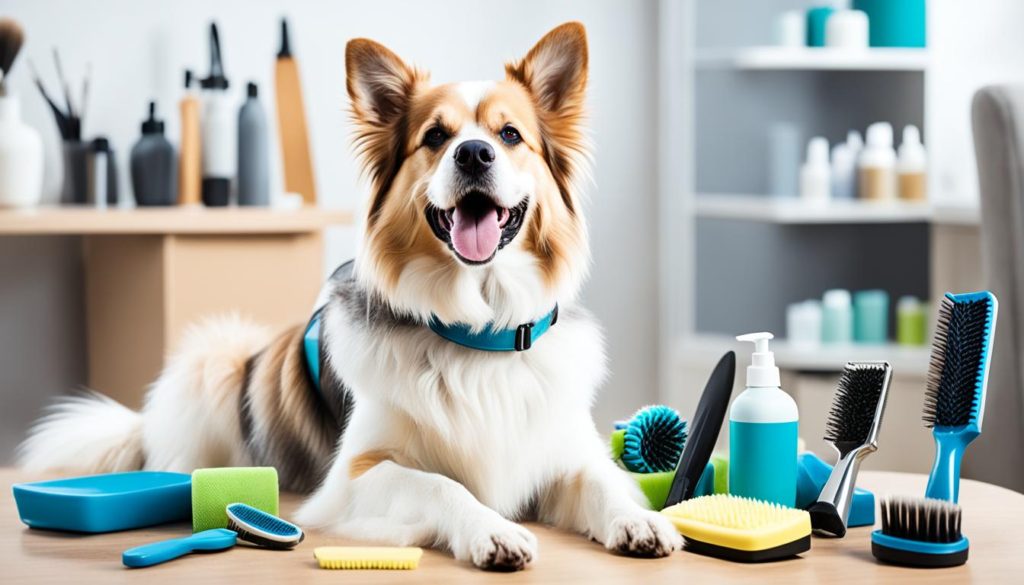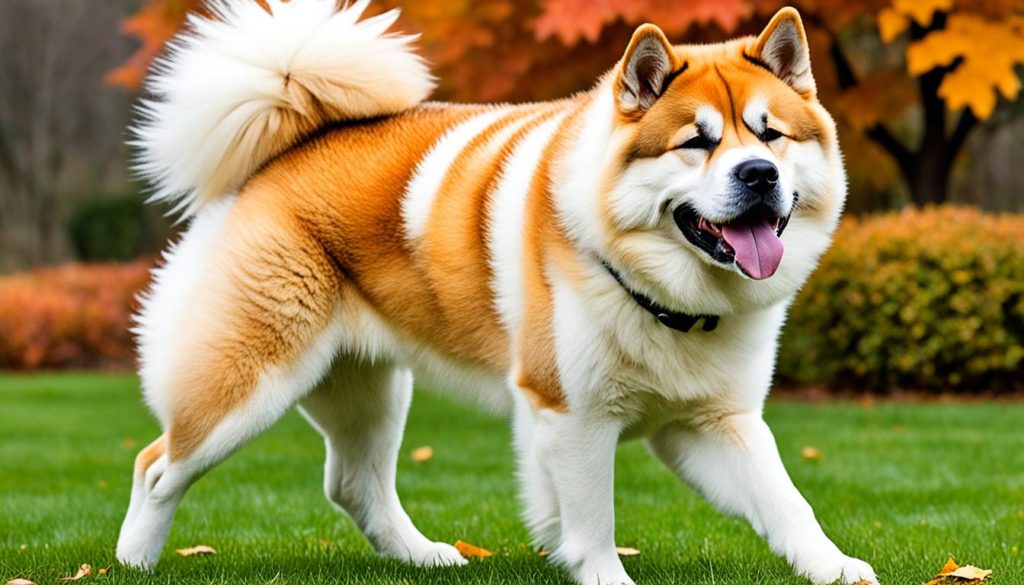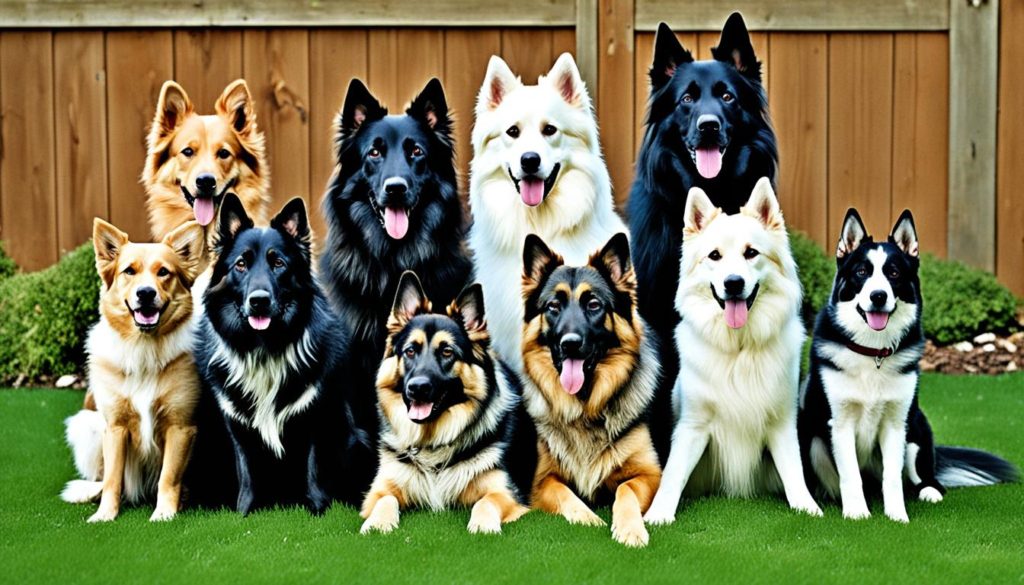Shedding is a normal process for all dogs, but some breeds shed more than others. If you’re a dog owner, you may have experienced the frustration of finding hair everywhere in your home. From your clothes to your furniture, excessive shedding can be a challenge to deal with. In this article, we will explore the top dog breeds that shed the most, helping you understand why some dogs shed more than others.
Factors such as hormonal imbalance, allergies, climate, and age can contribute to increased shedding in dogs. Additionally, certain breeds are more prone to shedding due to their coat type and seasonal shedding patterns. By learning about these breeds and understanding the factors behind shedding, you can take steps to manage and reduce excessive shedding in your furry companion.
Whether you’re considering getting a new dog or already own one that sheds excessively, this article will provide valuable insights and tips to help you manage shedding effectively. Let’s dive in and discover the dog breeds that shed the most, so you can be better prepared for the shedding challenges that lie ahead.
Key Takeaways:
- Some dog breeds shed more than others due to their coat type and seasonal shedding patterns.
- Factors like hormonal imbalance, allergies, climate, and age can contribute to excessive shedding.
- Understanding the reasons behind shedding can help you manage and reduce excessive shedding in your dog.
- Regular grooming, a nutritious diet, and proper hydration are essential for maintaining a healthy coat.
- Certain breeds, such as the Akita and Alaskan Malamute, are known to shed heavily due to their thick double coats.
9 Dog Breeds That Shed the Most
When it comes to shedding, some dog breeds stand out from the rest. If you’re looking for a low-maintenance pet, these breeds may not be the best choice for you. Here are nine breeds known for their heavy shedding:
- Saint Bernard
- Golden Retriever
- Chow Chow
- Akita
- Labrador Retriever
- Siberian Husky
- German Shepherd
- Alaskan Malamute
- Great Pyrenees
While shedding can vary within each breed, these dogs generally have double coats which contribute to their heavy shedding. Double coats consist of a soft undercoat and a longer, coarser outer coat. In addition to the double coat, some of these breeds have seasonal shedding patterns, where they shed more in certain seasons to prepare for temperature changes.
Managing the shedding of these breeds requires regular grooming and brushing to remove loose hair. Investing in a quality vacuum cleaner to keep your home clean and hair-free is also recommended. Despite the shedding, these breeds have many other wonderful qualities, such as loyalty, intelligence, and affection, which make them great companions for the right owners.
Facts About Shedding in Dogs:
“Shedding is a natural process for dogs and serves as a way for them to get rid of old or damaged hair. It is important to note that excessive shedding can be a sign of underlying health issues, such as allergies or poor nutrition.”
Understanding the shedding habits of different breeds can help you make an informed decision when choosing a dog that fits your lifestyle. If you’re someone who can handle a moderate amount of fur in your home and enjoy the grooming process, one of these heavy-shedding breeds might be the perfect match for you.
Understanding the Factors Behind Shedding
Shedding in dogs is influenced by a variety of factors, including their individual health, diet, and environment. These factors can contribute to the frequency and intensity of shedding in different breeds. Additionally, many dogs have a shedding cycle, where they shed their winter coats in the spring, preparing for the warmer months.
The shedding cycle is especially pronounced in certain breeds, such as the Siberian Husky. As the seasons change, these dogs naturally shed their dense undercoats to adapt to the rising temperatures. The shedding cycle ensures that their coats remain healthy and suitable for the prevailing climate.
Understanding the factors that contribute to shedding and the shedding cycle can help dog owners effectively manage excessive shedding. By identifying the underlying causes, you can take appropriate measures to minimize shedding and maintain your pet’s coat in optimal condition.
Factors that Contribute to Shedding
Several factors play a role in a dog’s shedding patterns:
- Individual Health: The overall health and well-being of your dog can impact their coat condition and shedding. Dogs with underlying health issues or imbalances may experience excessive shedding.
- Diet: Providing your dog with a balanced and nutritious diet is crucial for healthy coat growth. Essential nutrients like omega-3 fatty acids are known to promote a shiny and robust coat, while deficiencies can lead to increased shedding.
- Environment: Environmental factors, such as temperature and humidity, can influence shedding. Dogs in warmer climates may shed more to regulate their body temperature, while dry environments can exacerbate shedding by drying out the skin.
Managing Shedding
While shedding is a natural process, there are steps you can take to manage it:
- Regular Brushing: Brushing your dog’s coat regularly helps remove loose hair, reducing the amount of shedding around your home. Additionally, it stimulates the skin, promoting healthy hair growth.
- Nutritious Diet: Feed your dog a high-quality diet rich in essential nutrients to support a healthy coat. Consult with your veterinarian to ensure your dog’s nutritional needs are being met.
- Proper Grooming: Use appropriate grooming products and techniques to keep your dog’s coat in optimal condition. Regular bathing, nail trimming, and ear cleaning can help reduce shedding and maintain overall hygiene.
By implementing these strategies and understanding the factors that contribute to shedding, you can effectively manage your dog’s shedding, keeping their coat healthy and your home cleaner.
Now that we’ve explored the factors behind shedding and how to manage it, let’s dive into two specific breeds that are known for their heavy shedding: the Akita and the Alaskan Malamute.
H2: The Akita: A Breed That Sheds the Most
Tips for Managing Shedding in Dogs
As a dog owner, you may find yourself dealing with excessive shedding from your furry friend. Luckily, there are several effective methods you can use to manage shedding and keep your home clean and hair-free. By incorporating regular grooming, a proper diet, and attention to your dog’s overall health, you can help reduce shedding and promote a healthy coat.
Grooming for Shedding
Grooming plays a crucial role in managing shedding in dogs. Regular brushing helps remove loose hair before it falls out and gets scattered around your home. Use a brush or comb suitable for your dog’s coat type to effectively remove dead hair.
“Regular brushing not only controls shedding, but it also keeps your dog’s coat healthy and promotes good blood circulation,” says Dr. Lisa Johnson, a veterinarian with over 10 years of experience in pet care.
In addition to brushing, you can also consider professional grooming services. Professional groomers have the expertise and tools to perform thorough deshedding treatments that can significantly reduce shedding.
Diet for Shedding Dogs
The food you feed your dog also plays a vital role in managing shedding. A healthy, balanced diet can contribute to a strong and lustrous coat. Consider adding omega-3 fatty acids to your dog’s diet as they promote healthy hair growth and reduce shedding.
“Omega-3 fatty acids are known for their anti-inflammatory properties and can improve the overall coat condition of your dog,” suggests Dr. Johnson.
Consult your veterinarian to determine the appropriate dosage and sources of omega-3 fatty acids for your dog’s specific needs. Additionally, ensure your dog has access to fresh water at all times to maintain hydration, which is crucial for a healthy coat.
Reducing Shedding with Regular Bathing
Regular bathing using high-quality grooming products can help reduce shedding by removing loose hair and keeping the skin clean and healthy. Use dog-friendly shampoos and conditioners that are specifically formulated to minimize shedding and maintain the natural oils of your dog’s coat.
“When bathing your dog, make sure to rinse thoroughly to remove all residue, as leftover products can cause skin irritation and lead to excessive shedding,” advises Dr. Johnson.
Avoid Stress and Allergens
Environmental factors can contribute to shedding in dogs. Minimize stress in your dog’s life by providing a calm and safe environment. Stress can lead to excessive shedding, so create a peaceful atmosphere to keep shedding at bay.
Additionally, identify and eliminate potential allergens that could be triggering shedding in your dog. Common allergens include certain foods, pollen, mold, and dust mites. Work with your veterinarian to identify and manage any allergies that your dog may have, as this can help reduce shedding.

The Akita: A Breed That Sheds the Most
The Akita breed is known for its heavy shedding due to its thick double coat. Originating from Japan, Akitas were bred to withstand harsh climates, which is why they have such a dense coat. The double coat consists of a soft, insulating undercoat and a coarse, protective outer coat.
Because of their double coat, Akitas shed profusely, especially during their seasonal shedding periods. Regular grooming and brushing are essential for managing their shedding. Brushing not only helps to remove loose hair and prevent matting but also distributes the natural oils in their coat, promoting a healthier and shinier appearance.
During shedding seasons, such as the spring and fall, Akitas require even more attention to maintain their coat’s health. Increased brushing and regular baths can help remove loose hair and reduce shedding around the house.

The Alaskan Malamute: A High-Shedding Dog Breed
The Alaskan Malamute is a high-energy breed that requires regular grooming to manage shedding. These dogs have a dense, double coat that helps protect them in cold temperatures. However, it also means they shed year-round, which can be a challenge for owners.
To effectively manage Alaskan Malamute shedding, you should brush their coat regularly to remove loose hair and prevent matting. It is recommended to use a slicker brush or an undercoat rake to reach the thick undercoat and remove any loose hairs. Regular brushing not only helps reduce shedding but also promotes a healthy coat and skin.
| Alaskan Malamute Shedding Tips | Recommendations |
|---|---|
| Brushing | Regular brushing at least once a week to remove loose hair and prevent matting. |
| Grooming tools | Use a slicker brush or an undercoat rake for reaching the dense undercoat. |
| Bathing | Regular baths with a high-quality dog shampoo and conditioner suitable for double-coated breeds. |
| Diet | Ensure a balanced diet with appropriate nutrients, including omega-3 fatty acids, for a healthy coat. |
Additionally, providing your Alaskan Malamute with a nutritious diet and ensuring they have plenty of water will contribute to overall coat health and minimize excessive shedding. If you notice any abnormal shedding patterns or signs of skin irritation, it is recommended to consult a veterinarian for further evaluation and guidance.
Conclusion
Shedding is a natural process in dogs, and some breeds are more prone to it than others. Factors such as coat type, health, and environment play a significant role in determining the shedding levels of different dog breeds. By understanding these factors and implementing proper grooming and care, you can effectively manage shedding in your pets.
If you have a dog breed known for heavy shedding, like the Akita or Alaskan Malamute, regular brushing and grooming are crucial to prevent excessive hair accumulation in your home. Additionally, incorporating omega-3 fatty acids into their diet can promote a healthy coat and minimize shedding.
Remember that shedding is influenced by seasonal changes, hormone levels, and other individual factors. It’s important to consult with a veterinarian if you notice excessive or abnormal shedding patterns in your dog. They can provide further guidance on managing and addressing any underlying issues related to shedding.
FAQ
What dog breeds shed the most?
The dog breeds that are known for shedding the most include Saint Bernard, Golden Retriever, Chow Chow, Akita, Labrador Retriever, Siberian Husky, German Shepherd, Alaskan Malamute, and Great Pyrenees.
What factors contribute to shedding in dogs?
Shedding in dogs can be influenced by factors such as individual health, diet, environment, hormonal imbalance, allergies, climate, and age.
Are there any methods to manage shedding in dogs?
Yes, there are several methods to manage shedding in dogs. These include regular brushing, adding omega-3 fatty acids to their diet, using high-quality grooming products, regular bathing, feeding a nutritious diet, and ensuring proper hydration.
Why do Akitas shed so much?
Akitas shed heavily due to their thick double coat. Regular brushing and grooming are essential for managing shedding in Akitas.
What about Alaskan Malamutes? Do they shed a lot?
Yes, Alaskan Malamutes are high-shedding dog breeds. They have a double coat that helps protect them in cold temperatures but requires regular brushing and grooming to manage shedding.
Is shedding a natural process in dogs?
Yes, shedding is a natural process in dogs. However, the amount of shedding can vary depending on the breed, coat type, health, and environment.
